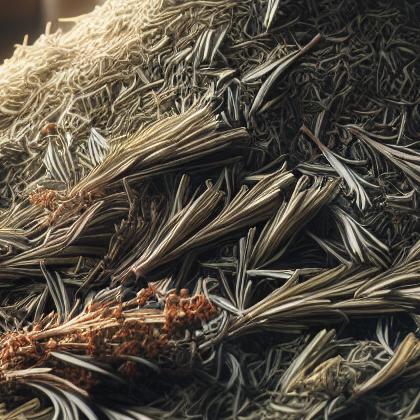Showing results for 'Dry rosemary'
close
Dry Rosemary

Rosmarinus officinalis, commonly known as rosemary, is a woody, perennial herb with fragrant, evergreen, needle-like leaves and white, pink, purple, or blue flowers, native to the Mediterranean region.
Dry rosemary Pairs With:
Food Item
Flavor Affinity Level
Dry rosemary Properties:
| Food Property | Type | Description |
|---|---|---|
| Flavor Profile | Astringency | Dry rosemary has a slight astringent taste due to the presence of tannins. |
| Texture | Dryness | Dry rosemary has a dry texture, making it ideal for seasoning dishes without adding moisture. |
| Aroma | Essential Oils | Dry rosemary contains essential oils that contribute to its strong, herbaceous aroma when used in cooking. |
| Nutritional Value | Micronutrients | Dry rosemary is rich in micronutrients such as vitamin A, vitamin C, and iron, providing added nutritional value to dishes. |
| Color | Natural Pigments | Dry rosemary retains its natural green color even after the drying process, adding visual appeal to dishes. |
| Chemical Composition | Enzymatic Activity | Dry rosemary has reduced enzymatic activity compared to fresh rosemary, making it suitable for long term storage. |
| Cooking Behavior | Water Retention | Dry rosemary has low water retention properties, releasing its flavors and aromas when added to dishes during cooking. |
Food Pairing App - Version 1.2.0
